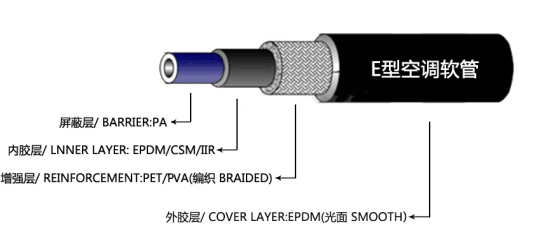Step-by-Step Guide to Replacing the Power Steering Hose on a Ford Edge Vehicle
Ford Edge Power Steering Hose Replacement A Comprehensive Guide
Maintaining your Ford Edge in optimal condition involves regular inspections and timely replacements of various components. One critical aspect of this maintenance routine is the power steering system, particularly the power steering hoses. These hoses enable the hydraulic fluid to flow between the pump and the steering gear, facilitating smooth steering and maneuverability. Over time, wear and tear can lead to leaks, reduced steering response, and in severe cases, complete steering failure. This article provides a step-by-step guide to help you navigate the power steering hose replacement process for your Ford Edge.
Understanding Power Steering Hoses
Power steering hoses are designed to withstand high pressure and temperature, transporting hydraulic fluid essential for the operation of your vehicle’s steering system. There are typically two hoses in a power steering system the high-pressure hose, which transports fluid from the pump to the steering gear, and the return hose, which carries fluid back to the pump. Signs of wear include fraying, cracking, or leaking fluid, which may appear as spots on your driveway or under the vehicle.
Tools and Materials Needed
To replace the power steering hoses in your Ford Edge, you will need the following tools and materials
- New power steering hoses (high-pressure and return hoses) - Hydraulic fluid (compatible with Ford specifications) - Socket and ratchet set - Pliers - Screwdrivers (flathead and Phillips) - Oil catch pan - Rags or paper towels - Safety goggles and gloves
Replacement Steps
1. Prepare Your Vehicle
Before you begin, ensure your vehicle is parked on a flat surface and the engine is turned off. Allow the engine to cool down if it has been running. Disconnect the negative battery terminal to prevent any electrical issues while working on the steering system.
2. Locate the Power Steering Hoses
Open the hood and identify the power steering pump, which is typically located near the front of the engine. Follow the hoses to locate both the high-pressure and return hoses. The high-pressure hose is usually thicker and connects directly from the pump to the steering gear.
ford edge power steering hose replacement

3. Drain the Power Steering Fluid
Place an oil catch pan beneath the power steering pump to catch any leaking fluid. Use a fluid extractor or a turkey baster to remove as much fluid from the reservoir as possible.
4. Disconnect the Old Hoses
Using your socket and ratchet set, loosen the bolts or clamps securing the hoses to the pump and steering gear. Carefully disconnect both the high-pressure and return hoses, allowing any remaining fluid to drain into the catch pan. Be cautious of any residual pressure that may escape.
5. Install the New Hoses
Take the new power steering hoses and connect the high-pressure hose to the pump and steering gear. Ensure the connections are secure, and use new clamps if necessary. Follow by attaching the return hose in the same manner.
6. Refill Power Steering Fluid
After the new hoses are installed, refill the power steering reservoir with the recommended hydraulic fluid. Check the owner’s manual for specifications. Be sure to leave a little space at the top to allow for fluid expansion.
7. Test the System
Reattach the negative battery terminal and start the engine. Turn the steering wheel from side to side several times to purge air from the system and circulate the fluid. Check for any leaks around the hose connections. If everything appears normal, lower the vehicle and take it for a short test drive, monitoring for any unusual steering behavior.
Conclusion
Replacing the power steering hoses on your Ford Edge is a manageable task that can save you both time and money. Regular maintenance and timely replacements enhance your vehicle's safety and performance. By following these steps, you can ensure your steering system functions efficiently, providing a safe and smooth driving experience. If you're ever in doubt, don’t hesitate to consult a professional mechanic.
-
Ultimate Spiral Protection for Hoses & CablesNewsJun.26,2025
-
The Ultimate Quick-Connect Solutions for Every NeedNewsJun.26,2025
-
SAE J1401 Brake Hose: Reliable Choice for Safe BrakingNewsJun.26,2025
-
Reliable J2064 A/C Hoses for Real-World Cooling NeedsNewsJun.26,2025
-
Heavy-Duty Sewer Jetting Hoses Built to LastNewsJun.26,2025
-
Fix Power Steering Tube Leaks Fast – Durable & Affordable SolutionNewsJun.26,2025

